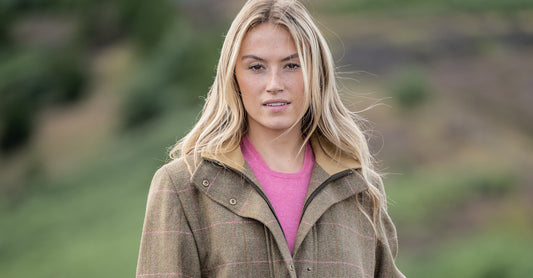
The Origins of Flannel
10 Jan 2014What is Flannel and How to Wear It?
In its purest and original form flannel is a woollen cloth made from carded yarn. The process of carding involves combing the yarn with a fine metal brush and flannel is further brushed, on one or both sides, to create a fine fuzzy nap. In contrast, worsted flannels are made from woollen yarns that are combed to create long fibres running parallel in one direction but not carded or napped after weaving, the yarn is smooth and without the fine down of napped flannel yarn. Typically worsted yarns are used to create traditional cloths such as serge and gabardine. What is the difference between cotton and flannel? The best way to think of the difference is...cotton is what the fibres of the fabric are made from and flannel is the way in which the fibres are woven together. Cotton is a material, where as flannel is a byproduct of a process. Of course, flannel can be made using cotton - just like it can with wool (and even now synthetics). The result is a tough, fuzzy textured finish popular in the construction of cotton flannel shirts today. Flannel is often attributed to a checkered design. There is no major reason why other than flannel material suits a checkered design and in turn the two have become associated with each other, so much so that the term 'flannel' is often (incorrectly) used to mean a checked shirt. If you're wondering how to wear a flannel shirt, the answer is simple. There are no strict rules around how to style a flannel shirt, mainly because it's meant as a piece of purely casual attire. Flannel shirts can be worn closed and alone or open with a t-shirt underneath, either a logo tee or a plain white tee would be suitable. Flannel shirts are often designed to be oversized and worn loose, with the ability to rear the sleeves turned back or rolled up. For a smart-casual occasion, wear a flannel checked shirt buttoned up and tucked in to either jeans or chinos and a leather belt.
 Although usually considered casual, a flannel shirt can be styled for smarter occasions when you choose a tailored fit and wear buttoned up and tucked in.
Although usually considered casual, a flannel shirt can be styled for smarter occasions when you choose a tailored fit and wear buttoned up and tucked in.What is the origin of flannel?
The origins of flannel can be traced back to the 17th Century when it was primarily used to make tartans, blankets, underwear and sheets. The napping creates a supremely soft and warm cloth as still air is trapped between the raised nap of the fibres. For this reason it became popular workwear in the US. All across the continent railroads were built, wells dug, gold mined, the West won, and latterly the cities of New York, Boston and Chicago raised by construction workers clad in plaid flannel shirts. Thus in turn becoming a sort of status symbol of the blue collar worker. However, aside from being warm, the napping creates a soft, wonderfully luxurious quality that drapes beautifully and is perfect for tailoring jackets and trousers. In the mid-twentieth century flannel suits achieved iconic status as the mark of a well-dressed man. Cary Grant, who still ranks on best-dressed men lists, was perhaps the most famed advocate of flannel. He liked his flannel: “Not too light in color, not too dark…….of medium weight but not more than what is known as ten-ounce cloth.” And so, soft charcoal grey flannel suits formed the mainstay of his wardrobe. Channel your inner Cary Grant with a woollen tweed jacket; a style that has endured from the golden age of cinema.
Channel your inner Cary Grant with a woollen tweed jacket; a style that has endured from the golden age of cinema.In an article he wrote for GQ he stated with characteristic élan, that: “providing he is well-mannered, a young man wearing such a suit can confidently approach the other fellow's girl, secure in knowing that his way of dress is no deterrent.” Less controversially, he also advised buying an extra pair of trousers, to be worn to equally stylish effect with a sweater, or a sports jackets depending on the mood and the moment. This classic look works as well today as it did back then – though the contemporary styling possibilities are endless and varied. Dependent on taste flannel works wonders with tweed, denim, knitted waistcoats, cord sports jackets, satchels, layering, and on into an infinite world of flannel friendly looks.



